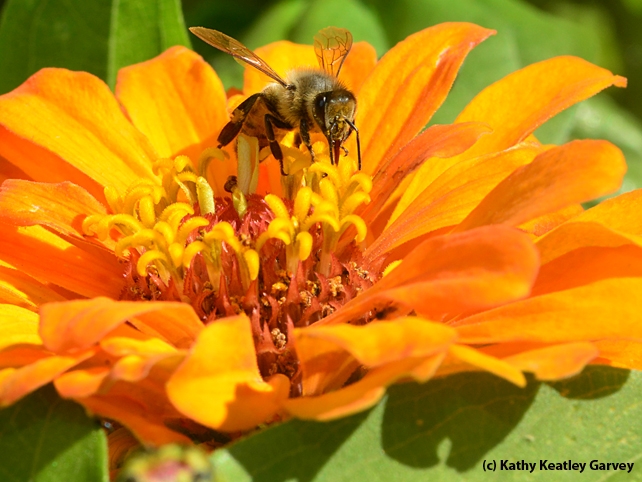
Better, says retired Extension apiculturist Eric Mussen of the UC Davis Department of Entomology and Nematology, who today published the last edition of his newsletter, from the UC Apiaries. Last? "Or, it's the last edition I'm solely responsible for."
Mussen retired in June after 38 years of service. Now it's "Welcome, Elina Lastro," who joined the department this week.
"The summary data from this spring's suvey on winter colony loss is available for review on beeinformed.org, the public's entry to information from the Bee Informed Parnership (BIP)," Mussen wrote. "Since it is called winter loss, it does not necessarily record the total losses in many operations because colonies are lost over the entire year, picking up considerably in fall and winter. Until recently the summer losses, often replaced using colony splits, were unreported. The good news is that the national average loss declined to 20.7 percent, the best in about a decade. Not many beekeepers blamed CCD (no logical explanation) for their losses, but mites and starvation were leading explanations."
Mussen pointed out that "since the data was listed by state averages, I wondered if that data were placed on a map of the U.S., could we see some sort of regional patterns." So, he did just that.
"Using colored pencils and scribbling, I colored like a kindergartner (or at least like I did in kindergarten and still do.), I did not see much of a pattern that stuck out. The states with the highest average losses (over 60 percent) did form a cluster (Illinois, Indiana and Michigan). The states with losses in the 50 percent range were all east of the Mississippi River: Iowa, Wisconsin, Ohio, West Virginia, New York and New Hampshire. States with losses in the 40 percent range were spread equally all over the country: Oregon, Arizona, Nebraska, Texas, Minnesota, Arkansas, Pennsylvania, Vermont and Connecticut.
"States with losses in the 30 percent range filled in a swath of states just south of the 50 and 60 percent losses, as well as Washington, Utah, South Dakota, Massachusetts, Rhode Island, and Maine. States with losses in the 20 percent range included seven of our southeastern states: Montana, Colorado, New Mexico, and Kansas. California, Idaho, Oklahoma and Hawaii showed state average losses below 20 percent."
Be sure to check out his latest newsletter. His website also lists many of his other newsletters and the Bee Briefs he's written over the last 38 years.
Attached Images:

